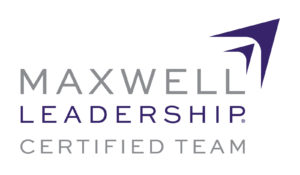
No matter what happens in life, be good to people. Being good to people is a wonderful legacy to leave behind. – Taylor Swift
As the father of two now grown and married daughters, I am a Swiftie dad. All through their teenage years our home was filled with the vibes of Taylor Swift.
It was only fitting that they traveled from South Carolina down to Tampa to see her on her Eras Concert tour. I was glad that they finally got to see her in person. It was the ultimate bucket list concert for them.
Her remarkable success speaks for itself. But what truly sets her apart is her tremendous generosity. It was reported in Forbes that she gave out bonuses totaling more than $55 million to her dancers, riggers, sound technicians, catering, and truck drivers. Multiple sources reported that she gave $100,000 bonuses to each of the 50 truck drivers on her tour.
But as impressive (and deserving) as the bonuses were, what I find most impressive is that Swift has held steadfast to the lost and dying art of handwritten notes. In fact, Swift is a prolific note-writer.
A copy of one of the hand-written notes to a truck driver was made public in which she expressed her thanks for their hard work.

Swift has been widely known to send these hand-written notes to friends and fans alike. This makes me wonder, could there be one for this Swiftie dad and his daughters?
In life as in your leadership, expressions of gratitude and thanks are very important.
In fact, survey results published at BlueBoard reported that 2 in 3 (67%) of employed Americans don’t always feel appreciated for their contributions at work. In addition, nearly half (42%) of respondents feel their company lacks a strong culture of appreciation.
In light of this, what does this mean for you as a leader and for your organization to build a culture of appreciation and gratitude? Here are a few thoughts to consider.
Gratitude and appreciation are the foundation of your employee engagement
Much has been said and written here and elsewhere about employee engagement over the years. But little has been said about gratitude and appreciation being the foundation upon which it’s all built and sustained. It’s time we acknowledge it.
Building a culture of appreciation and gratitude begins with those in leadership. Some might be dismissive of this idea as simply being too much of a “soft skill” idea when in reality, it’s needed more now than ever. People will have buy-in with what they help create and when they are appreciated for their efforts and sacrifices.
Gratitude and appreciation are the future of your leadership
The future of your leadership and that of your organization hinges on your understanding of what it means to create and sustain a culture of appreciation.
In the BlueBoard survey, they also reported that a lack of employee appreciation can:
- Cause employee disengagement
- Impact your employees’ sense of belonging
- Erode employee confidence
- Trigger job insecurity and anxiety in your workplace
If you want a strong culture of appreciation, strong morale, etc., then you begin with an understanding of the power of ‘thank you’. At every opportunity, make it a practice to show your appreciation and gratitude to those around you. It means more to them than you can imagine. Click To Tweet
As for helping this dad with two daughters, I’d like to express my sincere appreciation to Taylor Swift for making our home a happier place during those middle and high school years. From the boyfriends and the proverbial broken hearts and proms, and eventually on to their weddings, Taylor’s music has been there. Now they are raising up little Swifties of their own.
Thank you, Taylor, for accompanying us on the journey!
©2023 Doug Dickerson




 important, everything seems equal. We become active and busy but this doesn’t actually move us any closer to success. Activity is often unrelated to productivity, and busyness rarely takes care of business.” And this is such a necessary thing to learn in leadership.
important, everything seems equal. We become active and busy but this doesn’t actually move us any closer to success. Activity is often unrelated to productivity, and busyness rarely takes care of business.” And this is such a necessary thing to learn in leadership.






